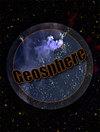Emplacement history of volcaniclastic turbidites around the central Azores volcanic islands: Frequencies of slope landslides and eruptions
IF 1.7
3区 地球科学
Q3 GEOSCIENCES, MULTIDISCIPLINARY
引用次数: 0
Abstract
Volcanic islands export clastic material to their surrounding oceans by explosive eruptions, lava emissions, biogenic production on their shelves, and failure of their slopes, amongst other processes. This raises the question of whether geological events (in particular, eruptions and landslides) can be detected offshore and dated, and whether any relationships (for example, with climate changes) can be revealed using sediment cores. The volcanically active central Azorean islands (Faial, Pico, São Jorge, and Terceira), with their neighboring submarine basins, are potentially good candidates for such an analysis. Here, chronostratigraphies of four gravity cores collected amongst the islands are constructed based on twelve radiocarbon dates and two dates derived by geochemically correlating primary volcaniclastic turbidites with ignimbrites on Faial and Terceira Islands. Age-depth models are built from the hemipelagic intervals to estimate individual turbidite dates. Volumes of turbidites are modeled by multiplying basin areas with bed thickness, allowing for various turbidite thinning rates and directions. The volumes of landslide-generated turbidites are only comparable with the largest volumes of their adjacent upper-slope submarine landslide valleys; therefore, such turbidites in the cores likely derive from these largest landslides. Emplacement intervals between turbidites originating from both landslides and pyroclastic density currents are found to be mostly a few thousand years. Frequencies of landslide-generated turbidites and hemipelagic sedimentation rates were both highest in the past 8 k.y. compared to preceding periods up to 50 k.y. High hemipelagic sedimentation rates are interpreted to be related to sea-level rise, allowing more shelf bioproduction and release of particles by coastal erosion. The coincident increased frequencies of submarine landslides may also be associated with the increased sediment supply from the islands, resulting in a more rapid build-up of unstable sediments on submarine slopes. Notably, the emplacement frequencies of turbidites of pyroclastic density current origins do not suggest the decreased eruption frequency toward the Holocene that has been found elsewhere.亚速尔群岛中部火山岛周围火山碎屑浊积岩的就位历史:斜坡滑坡和喷发的频率
火山岛通过爆炸性喷发、熔岩排放、陆架上的生物生成和斜坡的破坏等过程,将碎屑物质出口到周围的海洋。这就提出了一个问题,即是否可以在近海探测到地质事件(特别是火山爆发和山体滑坡)并确定其年代,以及是否可以使用沉积物岩心揭示任何关系(例如与气候变化)。火山活动活跃的亚速尔群岛中部(Faial、Pico、São Jorge和Terceira)及其邻近的海底盆地可能是进行此类分析的良好候选者。在这里,在岛屿之间收集的四个重力岩芯的年代地层图是基于12个放射性碳年代和两个通过将Faial和Terceira群岛的原生火山碎屑浊积岩与熔结凝灰岩进行地球化学关联而获得的年代。根据半深海层段建立年龄-深度模型,以估计单个浊积岩的日期。浊积岩的体积是通过将盆地面积与床层厚度相乘来建模的,考虑到不同的浊积岩减薄率和方向。滑坡生成的浊积岩的体积仅与其相邻的上斜坡海底滑坡谷的最大体积可比;因此,岩心中的这种浊积岩很可能来源于这些最大的滑坡。来自滑坡和火山碎屑密度流的浊积岩之间的安置间隔大多为几千年。与50千年前的时期相比,滑坡产生的浊积岩的频率和半上层沉积速率在过去8千年都是最高的。高的半上层沉积率被解释为与海平面上升有关,允许更多的陆架生物生产和海岸侵蚀释放颗粒。海底滑坡频率的同时增加也可能与岛屿沉积物供应的增加有关,导致海底斜坡上不稳定沉积物的快速堆积。值得注意的是,火山碎屑密度流起源的浊积岩的侵位频率并不表明在其他地方发现的全新世喷发频率降低。
本文章由计算机程序翻译,如有差异,请以英文原文为准。
求助全文
约1分钟内获得全文
求助全文
来源期刊

Geosphere
地学-地球科学综合
CiteScore
4.40
自引率
12.00%
发文量
71
审稿时长
6-12 weeks
期刊介绍:
Geosphere is GSA''s ambitious, online-only publication that addresses the growing need for timely publication of research results, data, software, and educational developments in ways that cannot be addressed by traditional formats. The journal''s rigorously peer-reviewed, high-quality research papers target an international audience in all geoscience fields. Its innovative format encourages extensive use of color, animations, interactivity, and oversize figures (maps, cross sections, etc.), and provides easy access to resources such as GIS databases, data archives, and modeling results. Geosphere''s broad scope and variety of contributions is a refreshing addition to traditional journals.
 求助内容:
求助内容: 应助结果提醒方式:
应助结果提醒方式:


